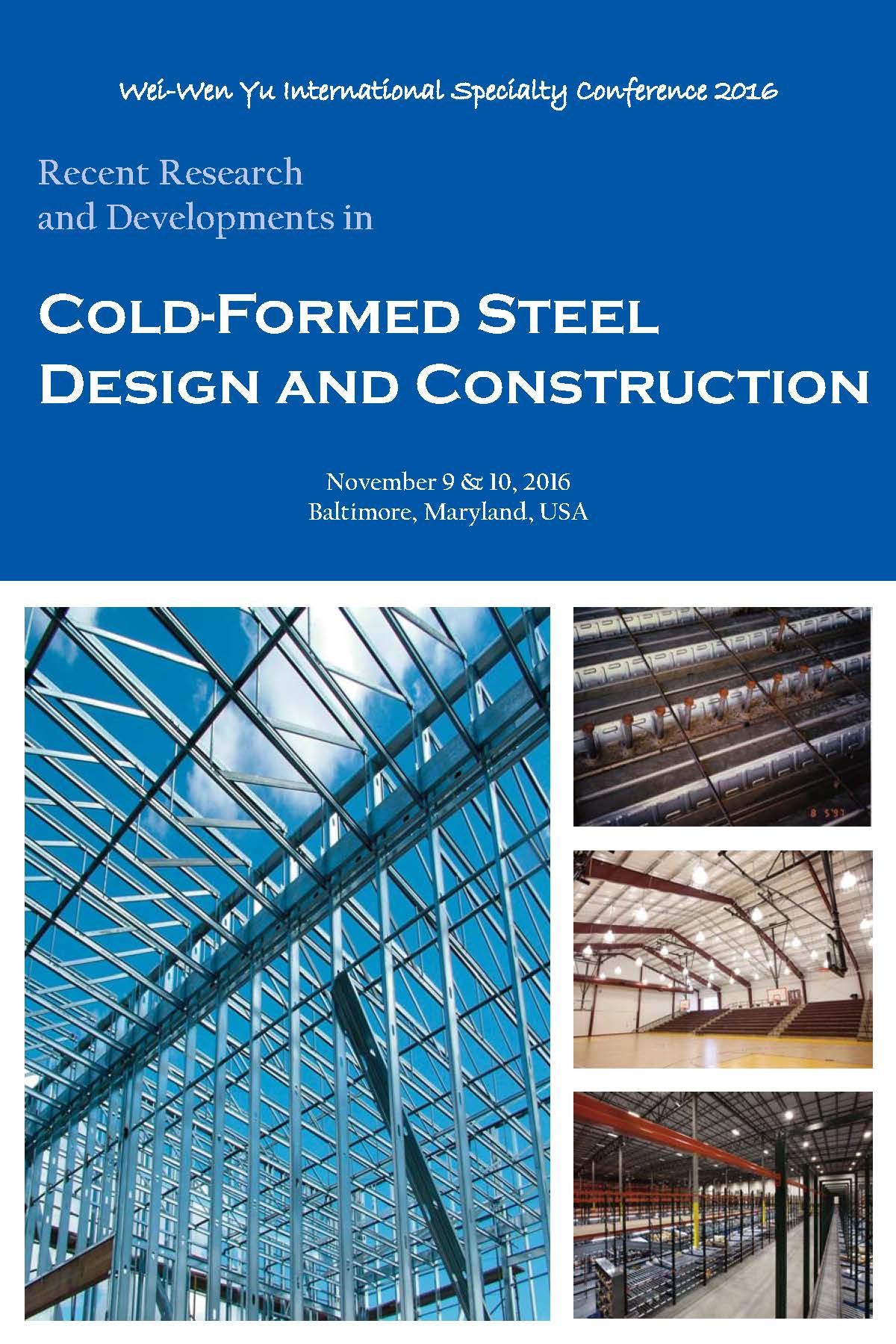Session Dates
09 Nov 2016
Abstract
The objective of this paper is to document progress on new cold-formed steel provisions for the forthcoming edition of ASCE 41, Seismic Evaluation and Retrofit of Existing Buildings. The current edition of ASCE 41 (2013) is weak with respect to the application of cold-formed steel and provides only limited information on cold-formed steel framed buildings, shear walls, members, and connections. The emphasis in this paper is on cold-formed steel framed shear walls, and the development of modeling parameters that characterize the backbone shear-deformation response, and acceptance criteria that provide allowable demand-to-capacity ratios (m-factors) for the shear walls based on a broad evaluation of existing data. Significant additional work has been developed to update ASCE 41; including, developing descriptions of benchmark buildings framed from cold-formed steel and how damage and deterioration is observed in these buildings. These descriptions are necessary in the evaluation process and exist for other building materials in ASCE 41 (2013), but not for cold-formed steel framing. In addition, modeling parameters and acceptance criteria are provided for individual cold-formed steel members in flexure and steel-to-steel connections. The paper provides a description of the collected experimental data and the procedures employed for developing modeling parameters and acceptance criteria, and provides the developed factors in summary form as currently being finalized through the ASCE 41 balloting process. The long-term goal of this effort is to further enable performance-based seismic design for buildings framed from cold-formed steel.
Department(s)
Civil, Architectural and Environmental Engineering
Research Center/Lab(s)
Wei-Wen Yu Center for Cold-Formed Steel Structures
Meeting Name
International Specialty Conference on Cold-Formed Steel Structures 2016
Publisher
Missouri University of Science and Technology
Document Version
Final Version
Rights
© 2016 Missouri University of Science and Technology, All rights reserved.
Document Type
Article - Conference proceedings
File Type
text
Language
English
Recommended Citation
Ayhan, Deniz; Madsen, Robert L.; and Schafer, Benjamin W., "Progress in the Development of ASCE 41 for Cold-Formed Steel" (2016). CCFSS Proceedings of International Specialty Conference on Cold-Formed Steel Structures (1971 - 2018). 3.
https://scholarsmine.mst.edu/isccss/23iccfss/session5/3
Progress in the Development of ASCE 41 for Cold-Formed Steel
The objective of this paper is to document progress on new cold-formed steel provisions for the forthcoming edition of ASCE 41, Seismic Evaluation and Retrofit of Existing Buildings. The current edition of ASCE 41 (2013) is weak with respect to the application of cold-formed steel and provides only limited information on cold-formed steel framed buildings, shear walls, members, and connections. The emphasis in this paper is on cold-formed steel framed shear walls, and the development of modeling parameters that characterize the backbone shear-deformation response, and acceptance criteria that provide allowable demand-to-capacity ratios (m-factors) for the shear walls based on a broad evaluation of existing data. Significant additional work has been developed to update ASCE 41; including, developing descriptions of benchmark buildings framed from cold-formed steel and how damage and deterioration is observed in these buildings. These descriptions are necessary in the evaluation process and exist for other building materials in ASCE 41 (2013), but not for cold-formed steel framing. In addition, modeling parameters and acceptance criteria are provided for individual cold-formed steel members in flexure and steel-to-steel connections. The paper provides a description of the collected experimental data and the procedures employed for developing modeling parameters and acceptance criteria, and provides the developed factors in summary form as currently being finalized through the ASCE 41 balloting process. The long-term goal of this effort is to further enable performance-based seismic design for buildings framed from cold-formed steel.



